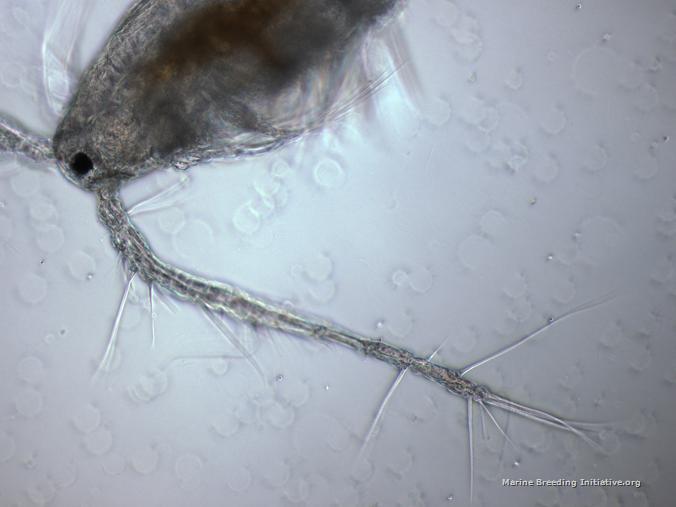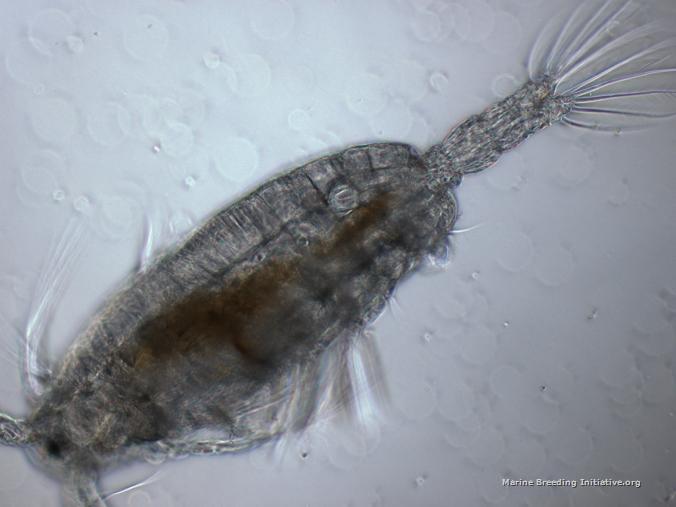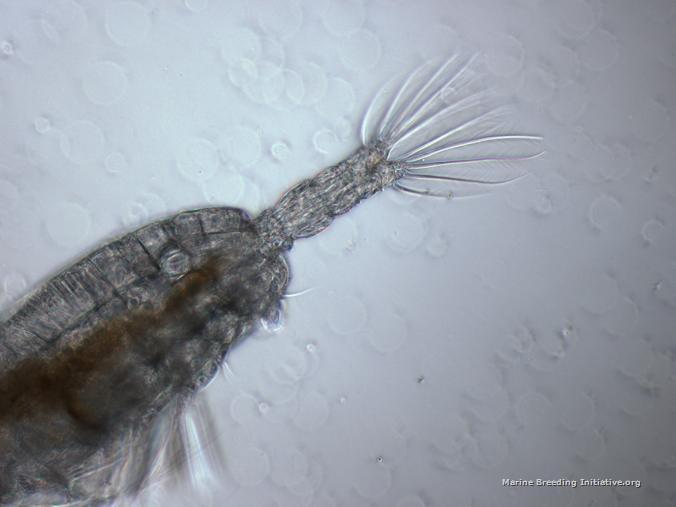Reports tied to this Journal
Author
|
Message

|
 Culture Journal, Species: Acartia tonsa
Tuesday, August 30, 2011 11:09 PM
Culture Journal, Species: Acartia tonsa
Tuesday, August 30, 2011 11:09 PM
( permalink)
Culturing Journal DataSheet
This first post should be updated regularly to include new information as events take place or changes are made to your system General Species: Acartia tonsa Species description: Calanoid copepod Culture source (link if possible ): Another hobbyist (WDT). If algae, CCMP # (Optional ): N/A http://ccmp.bigelow.edu/ Culture Establishment Date: 8/17/2011 Continuation Date: Culturing Vessel Details Salinity: 1.026 Temperature: Ambient room temp, low 70s F pH: Not measured
Vessel description: Various. Mostly glass fishbowls. Also, erlenmeyer flasks. Lighting description: Some cultures get ambient room light from south windows, others live in the phyto station, and get phyto station light (nearest the doors of the phyto station; Lights | phyto | copepods). Lighting cycle: Either natural day length, or 16H on / 8H off, depending on location. Aeration description: Rigid airline giving low to moderate aeration of all cultures. Methodologies Split methodology: Various. I will update this with details over time as I work this out to some sort of "standard" protocol. Culture medium description: Full strength artificial salt water. Cell count: Not counted Reference links: http://copepodes.obs-bany..fr/en/fichesp.php?sp=13 In particular, check this drawing of the male urosome: http://copepodes.obs-bany...orphological%20figures Also, check these images, and in particular, note the shape of the head, and the overall carriage of the antennae and also the long setae on the antennae: http://www.flseagrant.org...nsaIllustrationBig.jpg http://www.nobanis.org/Ma...ceans/AcartiaTonsa.htm Additional Information (No Pictures or Videos in the Section Please) Notes: Initial feed is very light Isochrysis (C-Iso) and occasional live Thalassiosira, when it is available. I feed just enough to ensure there is a light yellowish tint to the water at all times. I also add new saltwater mixed with live Icochrysis at about a 10:1 ratio regularly, increasing the volume by approximately 25% daily. You will be required to provide photographic evidence and as much detail as possible about your project in this thread.
If your thread does not contain detailed enough photos and information the MBI Council will not be able to approve your reports.
<message edited by JimWelsh on Wednesday, August 31, 2011 12:57 AM>
|
|
|
 Re:Culture Journal, Species: Acartia tonsa
Tuesday, August 30, 2011 11:43 PM
Re:Culture Journal, Species: Acartia tonsa
Tuesday, August 30, 2011 11:43 PM
( permalink)
I got these copepods initially as an unidentified copepod found in WDT's rotifer culture. The images WDT posted showed it almost certainly to be a calanoid. Any calanoid that would thrive in a rotifer culture was of great interest to me, so I asked WDT if he was willing to send me some, and he was (I paid for shipping). At the time, I didn't realize that he was feeding his rotfiers live Thalassiosira weissflogii! He sent me two shipping bags full of the rotifer/copepod co-culture. The bags were probably a liter each, perhaps more. He did also send a starter of the diatom. All of the cultures arrived in good condition. There were numerous copepods of all sizes in both bags. I was able to readily isolate a single adult that turned out to be a male, and get some good microphotographs of it:    Based on these images, I am confident that this is Acartia tonsa. WDT did confirm that he has does have a culture of A. tonsa. In addition to the photographic ID, the females do not carry eggs (no females can be seen carrying eggs), and I have since started two different cultures from eggs in the detritus from the cultures. Also, anecdotal observations by others about the behavior of the nauplii of A. tonsa (that they swim in small circles) has been confirmed; these nauplii do exhibit that swimming behavior. I have now isolated at least 5 different cultures that are free from rotifers. Three of those were accomplished by passing the co-culture through an 80 micron sieve. Only copepod nauplii passed through the seive, no rotifers nor rotifer eggs did. The other two rotifer-free cultures were obtained by taking some detritus from a co-culture, placing it into a graduated cylinder, and letting the contents settle. The supernatant with rotifers was poured off, and the cylinder was filled with clean saltwater. This was repeated until no rotifers could be seen in the supernatant. After a few days, copepod nauplii appeared.
|
|
|
 Re:Culture Journal, Species: Acartia tonsa
Friday, September 23, 2011 10:52 AM
Re:Culture Journal, Species: Acartia tonsa
Friday, September 23, 2011 10:52 AM
( permalink)
Hi Mr Welsh, this is the only tonsa culture journal I can find. Do you know if it is possible to culture these copepods using RotiGrow? I would like to use these copepods to supplement rotifer feeding for P fridmani larvae as well as preparing for S splendidus culture. I do not culture live phyto as I do not have the space.
|
|
|
 Re:Culture Journal, Species: Acartia tonsa
Friday, September 23, 2011 11:01 AM
Re:Culture Journal, Species: Acartia tonsa
Friday, September 23, 2011 11:01 AM
( permalink)
Please, call me Jim.
I don't know, but I should find out. It is more likely that they can be grown with Oxyrrhis marina as a feed, much like Apocyclops panamensis. O. marina can certainly be grown using RG+, just search here on MBI to find that info.
On the other hand, you might consider culturing the Apo instead of Acartia, as it seems to be more prolific, and easier to culture.
|
|
|
 Re:Culture Journal, Species: Acartia tonsa
Friday, September 23, 2011 5:55 PM
Re:Culture Journal, Species: Acartia tonsa
Friday, September 23, 2011 5:55 PM
( permalink)
Ok Jim.  Thank you for the info. I will look more at the species you suggest. Gee, culture O marina to culture A tonsa to culture P fridmani! Ha!! Such co-dependance is stressful. What is your purpose for culturing A tonsa? I wish this was a question in the overview. It is always nice to see which foods are being used for which species.
|
|
|
|